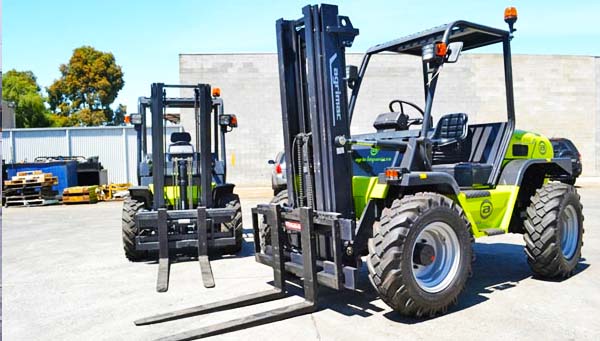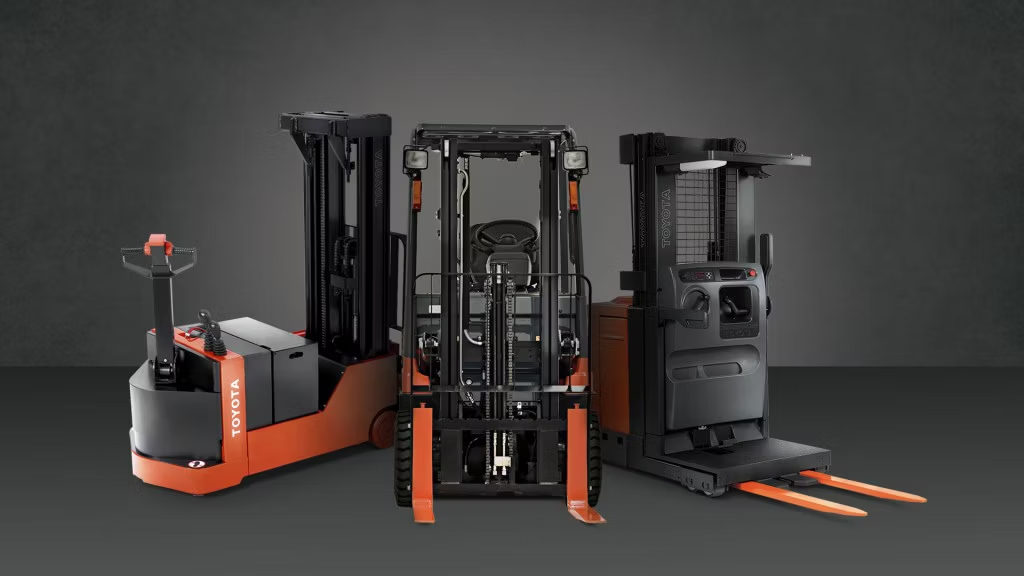
Are you in the market for a new forklift but feeling overwhelmed by the different types available?
Well, you’re not alone.
With so many options to choose from, it can be challenging to determine which forklift is best suited for your specific job. However, mastering the art of choosing different types of forklifts is essential for ensuring productivity and efficiency in your workplace.
From electric to diesel to narrow aisle forklifts, each type has its unique features and benefits.
In this blog post, we’ll guide you through the process of selecting the right forklift for your job, taking into consideration factors such as load capacity, working environment, and budget.
So, whether you’re looking to upgrade your current forklift or investing in one for the first time, keep reading to become a pro at choosing the perfect forklift for your needs.
When venturing into the world of forklifts, it’s vital to grasp the diversity among the different types available.
Each forklift type is tailored for specific tasks and environments.
The most common types include the counterbalance forklift. It is designed with forks at the front and a weight at the back to balance loads, making it suitable for a wide range of lifting tasks.
For warehouses with narrow aisles and tight spaces, narrow aisle forklifts offer an excellent solution. It maximizes space utilization without compromising on efficiency.
Electric forklifts, powered by batteries, are ideal for indoor use due to their zero emissions and low noise levels.
Diesel and gasoline forklifts are preferred for outdoor tasks, offering higher power output and longer operating times.
Rough terrain forklifts, with their sturdy build and specialized tires, are perfect for construction sites and uneven surfaces, providing stability and strength in challenging conditions.
Each of these types of forklifts comes with unique advantages and features designed to meet specific needs.
Therefore, it is important to understand your job requirements to select the most appropriate forklift for your operations.
Before diving into the vast sea of forklift options, take a moment to carefully assess the demands of your specific job.
Consider the type of materials you’ll be handling, their weight, and the height to which they need to be lifted.
Think about the environment where the forklift will operate — is it indoors, outdoors, or both? Also, factor in the frequency of use and the duration of operation.
These considerations will not only narrow down your choices but also ensure that the forklift you select is tailored to handle the challenges and requirements of your specific job efficiently.
When selecting a forklift, the lift capacity and height are crucial factors to evaluate.
Every forklift has a maximum weight it can safely lift and a maximum height it can reach. These parameters must align with the demands of your job.
Overloading a forklift or operating it beyond its reach capacity can lead to accidents and damage. Therefore, review the specifications of each model carefully.
It helps you choose the one that comfortably exceeds your heaviest load and highest lifting requirement.
Choosing the right fuel type for your forklift is essential for optimizing operational efficiency and managing costs effectively.
Electric forklifts, while requiring a higher initial investment, often lead to lower long-term operating costs due to their energy efficiency and reduced maintenance needs.
Conversely, diesel and gasoline forklifts might offer more power for outdoor and heavy-duty tasks. However, they generally incur higher fuel and maintenance expenses.
Additionally, consider the availability of fuel sources and charging infrastructure in your area. This could significantly impact the convenience and cost-effectiveness of your forklift operations.
When choosing a forklift, evaluating its maneuverability and ergonomic features is key to ensuring operator comfort and optimizing productivity.
Maneuverability is particularly critical in environments with limited space, such as warehouses or narrow aisles, where the ability to navigate tight corners and move efficiently is essential.
Look for forklifts with a tight turning radius and responsive steering to enhance maneuverability in such settings.
Ergonomics, on the other hand, plays a vital role in reducing operator fatigue and preventing injuries. Features to consider include adjustable seats, easy-to-reach controls, and minimal vibration during operation.
An ergonomic design not only promotes operator well-being but also contributes to higher efficiency and accuracy in handling tasks. Therefore, when assessing different types of forklifts, prioritize models that offer advanced maneuverability and ergonomic benefits to create a safer, more comfortable, and productive work environment.
Safety should always be a top priority when operating forklifts in the workplace. Before selecting a forklift, consider the safety features it offers to protect operators and prevent accidents. Look for features such as seat belts, horns, lights, and backup alarms, which enhance visibility and alert others to the presence of the forklift. Additionally, ensure that the forklift is equipped with overload protection systems and stability features to prevent tip-overs and accidents when handling heavy loads.
Furthermore, proper training is essential for all forklift operators to ensure safe and efficient operation. Invest in comprehensive training programs for your employees to familiarize them with the specific type of forklift they will be operating, as well as safety protocols and best practices.
Well-trained operators are not only less likely to cause accidents but also more proficient in handling tasks, leading to increased productivity and reduced downtime.
Now here comes the most important part that can impact your decision—the budget factor.
Many owners are likely to focus solely on upfront costs while investing in any forklift type. However, it is also important to factor in the total cost of ownership over the life of the equipment.
Apart from the initial purchase price, pay attention to maintenance, fuel or battery costs, and repairs. Depreciation should be considered while assessing the entire cost of buying a forklift.
Because electric forklifts use less energy and require less maintenance, they may have higher initial prices but lower ongoing operating costs. Forklifts powered by gasoline or diesel, on the other hand, could start cheaper but eventually cost more for fuel and maintenance.
Understand your long-term financial objectives and budget carefully to find the best choice that will save costs for your company.
Take into account variables like fuel economy, upkeep requirements, and anticipated lifespan to make an educated choice that fits your operating requirements and budget.
Choosing the right type of forklift for your job requires careful consideration of various factors, including load capacity, working environment, fuel type, maneuverability, ergonomics, safety features, training, and budget considerations.
With careful planning and consideration, you can find the perfect forklift to elevate your productivity and success in the agricultural industry.

December 18,2024


December 15,2024

December 15,2024

December 14,2024

The largest network of forklift dealers in the US and Canada is at your fingertips. Get the best pricing nationwide now on renting or buying a forklift
Get the lowest prices from our forklift dealers near you.